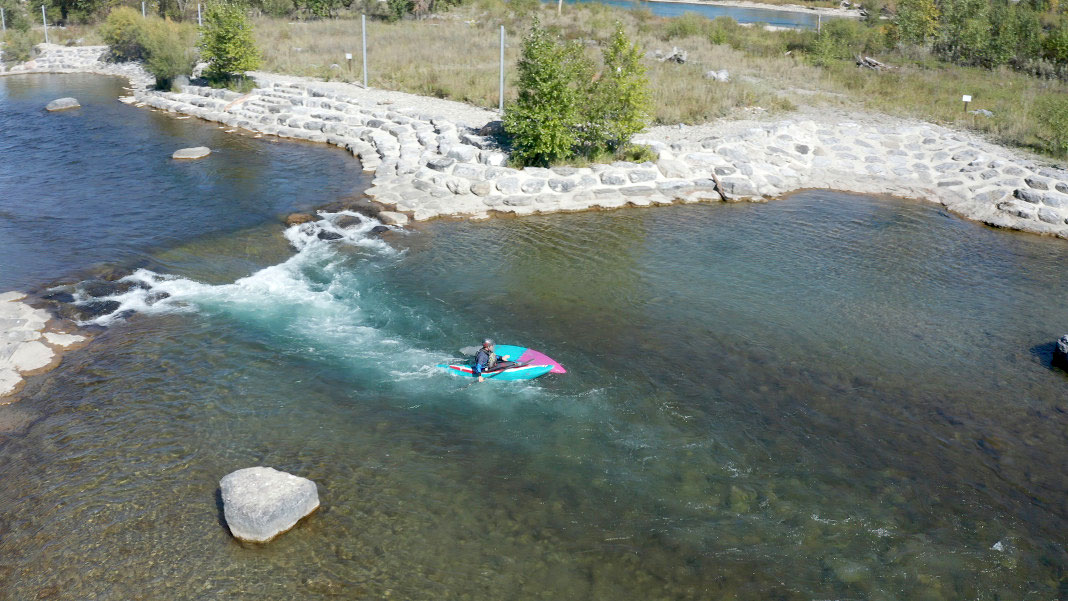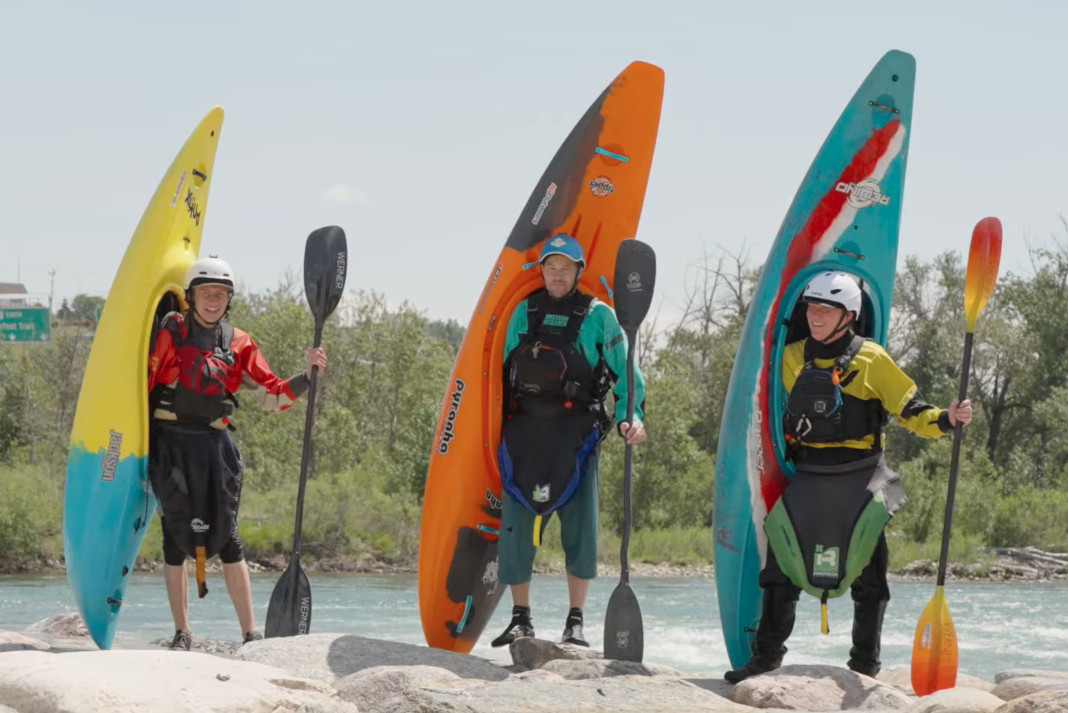In 1994 while most of us were paddling displacement hull kayaks Ian Thomson and Paul Danks set out on a long drive to Florida fantasizing about and scribbling designs of a boat that could do more than ever before. They wanted it to be a C1 for the advantage of leverage and the total lack of C1 designs on the market. Four glass prototypes later the C1 Groove revolutionized paddling forever. Thomson and Danks pioneered the distinct planing disk, the clean release principal, hull concavity and the foil or airplane shaped deck coined new moves such as the green grind and the counter clock wheel (cartwheeling towards the pile). Now, seven years later, Corran Addison at Riot has tweaked the original shape slightly and the plastic C1 Groove sits among Riot’s concept prototypes.
What did we think of the Riot prototype? The most incredible plastic C1 ever built! The Groove measures in at 7’9”, is incredibly stable and has a familiar asymmetrical C1 feel. The cockpit is a true C1 racing shape, supporting your lower legs with the top of the deck, ah the good old days. Going from converted kayaks back to a real C1 is a revelation in stability – it’s like it’s supposed to be when you’re sitting seven inches off the water. The hull is twenty-nine inches wide at your hips, producing a planing surface that is almost three feet long and two feet wide. Remember riding those Flying Saucer toboggans? That’s the Groove on a wave, get it going down hill and hold on until you’re dizzy. The Groove has very little rocker and a long water line make it the fastest boat I’ve paddled in years. I enjoyed the simple pleasure of smoking past kayakers on the flats between sets. On a short, steep wave you need to keep this long, fast boat carving or spinning to avoid burying the bow and wide stern. At 165 pounds, I found ends in a hole and on flatwater to be no problem, incredible fast but less stable and smooth than newer kayak designs with more cockpit volume and more symmetrical hull shapes.
Coming from paddling converted kayaks it was pleasing to experience the characteristics that different a yak from a true C1. The Groove is a fast, stable, traditional feeling C1 that spins like a top. The market potential for C1’s is small and whether or not Riot will produce a plastic Groove is unknown. The Groove was so far ahead of its time that even seven years later, if released, it would be the hottest production C1 on any river. If they build it, people will come.
This article first appeared in the Early Summer 2005 issue of Rapid Magazine. For more great boat reviews, subscribe to Rapid’s print and digital editions here.









